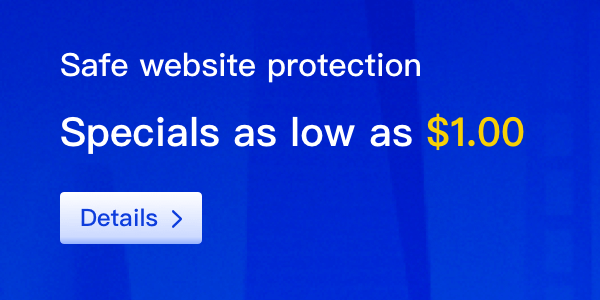Introduction
The development of the internet has made our lives more convenient, but it has also brought many cybersecurity threats. Cybersecurity threats refer to the actions of attacking and destroying information systems through the internet, posing threats to our websites and data. This article will discuss the types of cybersecurity threats and how they affect your website.

Threat Type 1: Malware
Malware refers to a computer program intentionally designed to damage computer systems, networks, mobile devices, etc. Malware can enter your computer through downloading attachments, clicking links, visiting infected websites, etc., posing a significant security risk to your website. Malware can steal your sensitive information, such as usernames, passwords, etc., and can also make your website part of a botnet.
Malware includes viruses, spyware, trojans, worms, etc. Viruses infect computers and replicate themselves within the system, damaging the computer system; spyware records user's online activities and sends the information to the attacker; trojans silently control your computer behind the scenes.
Malware poses a significant security threat to your website, such as stealing your sensitive information, damaging your website, making your website part of a botnet, etc.
Threat Type 2: Denial-of-Service Attacks
Denial-of-Service (DDoS) attacks are a type of cyber attack that paralyzes a specific website by launching a large number of requests. Attackers can use multiple computers or devices to send a large amount of traffic, making the target website unable to work properly. DDoS attacks can cause website delays or inaccessibility, affecting the normal operation of the website.
DDoS attacks can be implemented in various ways, such as using botnets, utilizing UDP protocol, etc. Attackers can use DDoS attacks to extort website owners or use it for political or economic attacks.
Threat Type 3: Phishing
Phishing is a type of cyber attack that deceives users to obtain sensitive information (such as usernames, passwords, bank account information, etc.). Attackers usually impersonate legitimate institutions or websites, tricking users into clicking links or entering personal information. Phishing attacks can cause economic losses to users and also pose reputation risks to websites.
Phishing attacks can be carried out through various means such as emails, social media, instant messages, etc. Attackers will forge legitimate information sources, making users think it's a legitimate request.
Conclusion
Cybersecurity threats are a serious problem, causing significant damage to our websites and data. To protect our websites, we need to take a series of measures, such as installing antivirus software, strengthening password security, backing up data, etc. Only in this way can we better protect our websites and ensure the safety of our property and privacy.
How to Protect Your Website
Cybersecurity threats are an increasingly serious problem, and we need to take measures to protect our websites. Here are some effective methods to protect websites:
1. Install Antivirus Software
Installing antivirus software is the first step to protect your website and computer. Antivirus software can prevent and remove malware, protecting your website and computer from attacks.
2. Strengthen Password Security
A strong password is key to protecting your website. Using complex passwords, including uppercase and lowercase letters, numbers, and symbols, can prevent attackers from invading your website by guessing passwords.
3. Backup Data
Regularly backing up your website data is an important step in protecting your website. If your website is attacked, backup data can help you restore the website and reduce data loss.
4. Update Software and Systems
Regularly updating your software and systems can help maintain the security of your website. Updates usually include fixing security vulnerabilities and strengthening security measures, thereby reducing the risk of website attacks.
5. Train Employees
Training employees helps to raise their awareness of cybersecurity, thereby reducing security vulnerabilities caused by human factors. Training content can include password security, phishing attacks, malware, etc.
6. Use SSL Certificates
Using SSL certificates can encrypt your website data, protecting user privacy and security. SSL certificates can prevent hackers from stealing users' personal information and can also enhance the credibility of your website.
Conclusion
Protecting your website from cybersecurity threats is an important task. By installing antivirus software, strengthening password security, backing up data, updating software and systems, training employees, using SSL certificates, etc., you can effectively protect your website and data security. Also, regularly checking your website for security vulnerabilities is an important step in protecting your website. Let's take action together to protect the security of our websites!






















